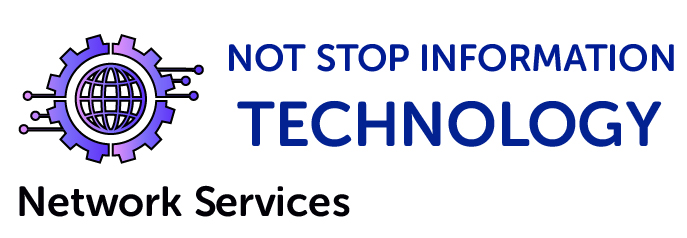
IT Infrastructure Monitoring and Analysis of Business Data Security & Application Performance
Not Stop Information Technology Network Services provides monitoring of all mission-critical infrastructure components including applications, services, operating systems, network protocols, systems metrics, and network infrastructure. Hundreds of third-party addons provide for monitoring of virtually all in-house and external applications, services, and systems.
When it comes to open source network monitoring tools, the World’s largest organizations turn to SIEM, Solar winds, Nagios, A LOT Security, and PRTG, . Operation Center monitors the network for problems caused by overloaded data links or network connections, as well as monitoring routers, switches and more. Easily able to monitor availability, uptime and response time of every node on the network, Nagios can deliver the results in a variety of visual representations and reports.
More Info:
Network Monitoring Software
Network Traffic Monitoring
Network Analyzer

Analyst - Network Operations Center Network Monitoring Management Information Security Operations Center Business
Server Monitoring

Solar winds, Nagios, A LOT Security, and PRTG, is known for being the best server monitoring software on the market. Server monitoring is made easy in Nagios because of the flexibility to monitor your servers with both agent-based and agentless monitoring. With over 10000 different addons available to monitor your servers, the community at the Nagios Exchange have left no stone unturned.
More Info:
Server Monitoring Software
Windows Server Monitoring
Linux Server Monitoring
Map the future your Modern Business - Application Monitoring - ERP & CRM
Implementing effective application monitoring with Nagios allows your organization to quickly detect application, service, or process problems, and take action to eliminate downtime for your application users. Nagios provides tools for monitoring of applications and application state – including Windows applications, Linux applications, UNIX applications, and Web applications.
More Info:
Automate SIEM Log Aggregation, Analysis, and Reporting with Security Event Manager

Get actionable insights from unified & correlated SIEM log data to detect and handle security risks in real-time

Aggregate all SIEM logs at one location
Automatically collect logs from different sources across the network in a centralized repository.
Detect security risks with real-time analysis
Preempt risks and determine cause and effect of an incident with simple and instant event-time correlation.
Monitor proactively and automate remediation
Avoid any suspicious behavior with constant SIEM monitoring and automate responses to expedite remediation.
Streamline SIEM log management to detect and handle security threats
Security Event Manager
Unify and extract actionable intelligence from all your logs in real-time.
Expedite threat response against malicious IPs, accounts, applications, and more.
Get out-of-the-box compliance reporting for HIPAA, PCI DSS, SOX, ISO, and more.
Manual SIEM log management is tedious and lacks actionable insights to prevent risks
Disintegrated event log data
Streamlining fragmented event logs manually from multiple sources across a network is time-consuming and hampers IT team’s productivity.
Inefficient security threat detection
Lack of clear context between event logs from various sources restricts proactive identification of security breaches and incidents.
Delayed SIEM monitoring and remediation
Inconsistent SIEM monitoring and lag in response to mitigate threats can increase vulnerability and put the network at greater risk.
Network Performance Monitor
Multi-vendor network monitoring that scales and expands with the needs of your network
Key Features
Multi-vendor network monitoring
Network Insights for deeper visibility
Intelligent maps
NetPath and PerfStack for easy troubleshooting
Smarter scalability for large environments
Advanced alerting
Supporting Business Growth With Effective On Time, Critical Management Information. Map the future of your business by transitioning into a data-centric manufacturing organisation with Moitoring and analysis solutions from SAP & Microsoft Dynamics ERP, IOT / Big Data, Data Center Secuirty & Solutions.
Scalable Network Monitoring in High Speed Network for Enterprise Technology Services
We deliver ERP Monitoring Solution in a way that maximizes impact for business and delivers our resources in the most cost-effective way. Not Stop Information Technology Network Services solutions support us in that effort."

Solve your toughest IT management problem, today.


What’s Changed: Gartner’s 2019 Magic Quadrant for Application Performance Monitoring

Recently, analyst house Gartner, Inc. released their 2019 Magic Quadrant for Application Performance Monitoring. Gartner defines application performance monitoring (APM) suites as “one or more software components that facilitate application monitoring to meet three main functional dimensions.” Those three functions are digital experience monitoring (DEM), application discovery, tracing and diagnostics (ADTD), and artifical intelligence for IT operations (AIOps).
Leaders, Challengers, and Niche Players Consistency
Gartner’s Magic Quadrants are broken down into 4 categories: Leaders, Challengers, Visionaries, and Niche Players. Each vendor is placed on the quadrant based on their strengths, weaknesses, market share, and user reviews, among other metrics. The 12 vendors that Gartner analyzed for this Magic Quadrant are Broadcom (CA Technologies), Cisco (AppDynamics), Dynatrace, IBM, ManageEngine, Micro Focus, Microsoft, New Relic, Oracle, Riverbed, SolarWinds, and Tingyun.
What does the empty Visionary quadrant mean?
As we stated above, Gartner placed no vendors in the Visionary quadrant this year. This continues a trend from last year’s Magic Quadrant. Visionaries typically have a higher completeness of their vision but a lower ability to execute. Gartner describes Visionaries as vendors who “provide products that have built a compelling plan to competitively address current and future APM suite market requirements, but whose current product portfolio may still be a work in progress.”
Integrated all-in-one monitoring capabilities
In their research, Gartner uncovered a trend that APM vendors increasing their monitoring functionality across all spectrums. Vendors are currently focused on providing all-in-one monitoring suites to cover performance analysis across several areas, including applications, networks, databases, and servers. By broadening their monitoring capabilities, these vendors want to capitalize every monitoring market they can. Gartner suggests that enterprise choose carefully between an all-in-one tool suite for all their monitoring needs or cherry-picking the best of each monitoring solution sector.



